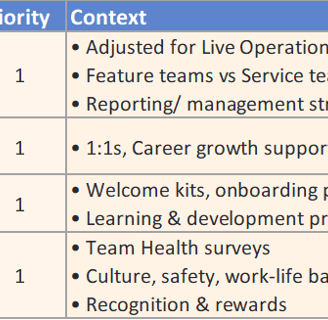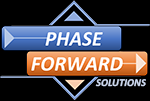PEOPLE
Projects can succeed with best-in-class people and poor processes. However, they can and will fail with ill-suited people and best-in-class processes. People are a project’s greatest assets.
The goal is to assemble a project team, an org structure, and a culture that encourages empowerment, accountability and success. The teams will need support and guidance throughout the project’s development and its evolving production challenges. It’s also important to note the progressive stages of team development - Forming, Storming, Norming and Performing - and how these stages are rebooted each time teams are adjusted and re-assembled.
Some of the activities listed below may feel unnecessary or too heavy for small-sized project teams that need to be fast, light, and pivot often. That's fine; the goal here is to show practices & approaches as food-for-thought for your own situation. But I do feel each should be considered.
Below are the different Production Phases and the particular PEOPLE items that should be addressed per Phase.
RESEARCH & EXPLORATION PHASE
The objective of the Research and Exploration Phase is to investigate, explore and propose the vision for a new product. The Team can dedicate time and focus to develop that creative vision through prototyping and proofs of concept, conducting research, and experimenting with the player experience they intend to build that aligns with the market potential. The R&E Phase allows teams to remain in an iterative development cycle, assume risks, try and fail, and test and refine the player experience until they are ready to move into the Conceptual Development Phase.
In the PEOPLE category, the focus is on identifying and assembling the Project Leadership Team (“PLT”), which is the core group of Directors responsible for establishing the majority of the project’s foundations moving forward. In addition, an initial team composition plan and accompanying staffing roadmap are proposed, along with its associated team SWOT analysis (Strengths, Weaknesses, Opportunities, Threats). It’s also a good practice to identify all Stakeholders involved with the project, both internal and external, and a plan for their engagement.
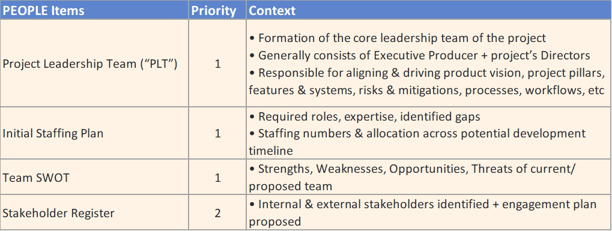

CONCEPTUAL DEVELOPMENT PHASE
The objective of the Conceptual Development Phase is to clarify the project intent and define the plan for pre-production. It is the opportunity for the team to formulate a matured creative vision and prove their intent to deliver an innovative, fun and successfully viable product. The Conceptual Development Phase allows for the formalizing of the direction for the setting, narrative, features, systems and core gameplay experiences and how they interact and support each other, along with the accompanying scope of content. The focus is also on understanding the market and business potential, along with the production planning roadmap for shipping the final product.
In the PEOPLE category, the focus is on assembling the core team (expanded Directors, Associate Directors, Producers, Leads) and establishing the team’s foundations for moving forward. This would include the team’s organizational structure (feature teams, content teams, strike teams, specialized teams), as well as clarifying, documenting and communicating the various project roles and their associated responsibilities. In addition, team support processes are implemented: team development best practices (individual career goals, individual development plans, manager one-on-ones, performance review framework), onboarding & training processes (onboarding checklists & documentation, learning & development programs, training curriculums), and regular team health surveys & action plans.
The investments per area depend on, of course, your own project's team size and unique characteristics.
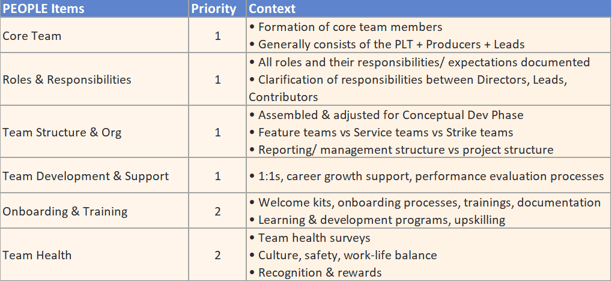

PRE-PRODUCTION PHASE
The objective of the Pre-Production Phase is to prove the core gameplay experiences, lock the Feature List and their design & technical specifications, and confirm expectations on scope and feasibility of content. All tech and game areas should be de-risked, with content creation pipelines proved out with actual production tools & workflows. Content and Feature benchmarks have been stood up to confirm pipelines, prove estimates, and set targets for production.
In the PEOPLE category, the team structure & organization will be continuously monitored and adjusted throughout the phase depending on the evolving risks and priorities during Pre-Production. Onboarding processes will also evolve as project complexity increases, along with training programs. Team development practices continue, matching individual development goals to project and studio needs now and in the future, along with team health monitoring and associated action items.

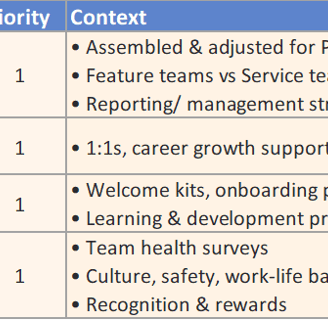
PRODUCTION PHASE
The Production Phase is focused on creating content and integrating assets into the game and executing on all aspects of product development. The team will implement the learnings and knowledge from the vertical slice or MVP delivery into the product development and production processes. In-software reviews and playtests combined with continuous scope & capacity assessments are required to adhere to quality and schedule requirements.
In the PEOPLE category, the team structure is organized for full production while allowing flexibility for assembling short-term Strike Teams for targeted objectives during Production. Team support and development best practices continue, ensuring individual growth and development during production while monitoring overall team health and engagement.

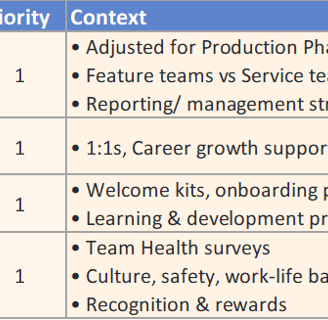
FINALING PHASE
In the Finaling Phase the game is tuned and balanced to provide a rounded and rewarding experience for the player. The focus in this phase is on reviews and playtests in order to acquire internal and external feedback from a wide variety of sources. Feedback analysis, prioritization and implementation takes place within the established change request processes relative to the remaining production timeline. The first Production Gate in the Finaling Phase is Beta, followed by a final push to product Launch.
In the PEOPLE category, the team structure is re-organized for polishing and debugging, while again allowing flexibility for Strike Teams to emerge for targeted debugging challenges. Team support and team health monitoring is especially important during this Phase as the team wrestles with complex debugging, quality and scheduling challenges driving to product Launch.
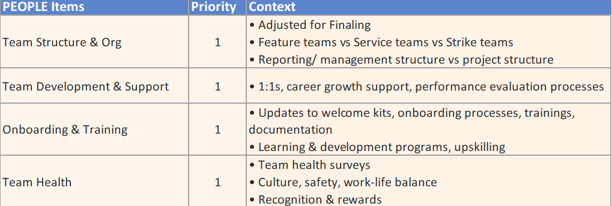

LIVE OPERATIONS
The focus of Live Operations is to expand and increase player engagement and boost the relationship with the community via regular content updates, events, new gameplay modes, modding, user tools, unique server playgrounds, new entry points, user generated content, UX evolutions, etc. Player feedback is continually assessed and where feasible integrated within the live operations product roadmap and release plan. In addition, the team is continuously optimizing production pipelines as well as the user experience to facilitate product updates and the player’s engagement.
In the PEOPLE category, the team structure is continuously re-assessed and re-formed depending on the project’s evolving product roadmap, influenced by both player base and player expectations. Team onboarding and training programs are regularly utilized as new team members join throughout Live Ops, and team support and development practices remain critical to ensure team engagement, preventing burnout from what can be a long, demanding product support Phase.

